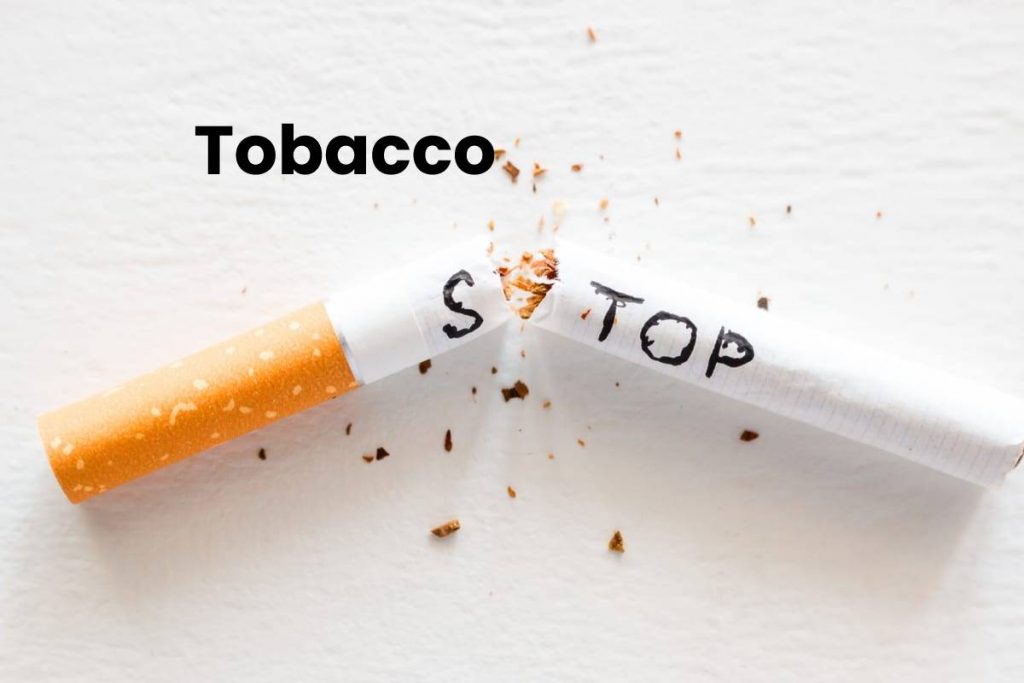Table of Contents
key Points Of Tobacco
Tobacco kills almost half of those who use it.
Tobacco kills more than 8 million people annually, including more than 7 million who use it directly and about 1.2 million non-smokers who are involuntary smoke.
About 80% of the 1.3 billion smokers globally live in low- and middle-income countries.
Tobacco Leads to Death, Morbidity, and Poverty
the tobacco epidemic is one of the greatest public health threats the world has ever seen. It claims more than 8 million lives worldwide each year, including more than 7 million directly using it and about 1.2 million non-smokers exposed to smoke against their will.1
All forms of tobacco are harmful, and there is no safe level of tobacco exposure. Cigarette smoking remains the most common type of tobacco use worldwide. Other tobacco products include hookah tobacco, smokeless tobacco products, cigars, cigarillos, hand-ready tobacco, pipe tobacco, bidi rolls, and cretic rolls.
The health damage to hookah smoking is no less than tobacco cigarettes. However, its users are often unaware of the health risks of using hookah tobacco.
Smokeless Tobacco
Smokeless tobacco use is also a substantial cause of addiction and is harmful to health. Tobacco contains many carcinogens, and its use increases the risk of developing cancers of the head, neck, throat, esophagus, and oral cavity (including cancer of the mouth, tongue, lips, and gums) as various other dental diseases.
More than 80% of the 1.3 billion smokers globally live in low- and middle-income countries, where the burden of nicotine morbidity and mortality is peaked. Nicotine use contributes to poverty as household spending deviates from basic needs such as food and shelter to tobacco.
The economic cost of tobacco use is enormous, including the high healthcare costs of treating diseases caused by nicotine use and the loss of human capital as a result of deaths and morbidity due to nicotine causes.
In some countries, children from low-income families are employed in nicotine cultivation to generate income. Nicotine farmers are also at many health risks, including so-called “green tobacco disease.”
Surveillance is the key to the solution.
Good monitoring enables tracking the scale and characteristics of the nicotine epidemic and identifying the best ways to implement policies.
Only one in three countries, representing 38% of the world’s population, monitors nicotine use by repeating surveys of young people and adults nationwide at least once every five years.
Key Measures To Be Taken For Quitting Tobacco
secondhand smoke fills indoors when people ignite tobacco products, such as cigarettes, bidi rolls.
There is no safe level of exposure to secondhand smoke, resulting in more than 1.2 million premature deaths per year and severe cardiovascular and respiratory diseases cases.
About half of children regularly breathe air contaminated with nicotine smoke in public places, and 65,000 people die each year from diseases attributable to secondhand smoke.
Passive non-erudite smoking in infants increases the risk of infant death syndrome. In pregnant women, it causes complications of pregnancy and underweight at birth.
Smoking prevention laws protect the health of non-smokers and are common because they do not harm businesses and encourage smokers to quit.
photo health warnings are effective
broad images or drawings contain health warnings, including those on simple nicotine casings, which send potent messages. It can convince smokers to protect the health of non-smokers by not smoking at home, increase compliance with smoking prevention laws and encourage more people to quit tobacco use.
Studies show that graphic warnings raise people’s awareness of the harms caused by nicotine use.
Mass media campaigns can also reduce nicotine use by strengthening non-smoking protection and persuading people to stop tobacco.
Banning nicotine
quitting smoking, and caring for cancer,
there are known risks if you continue to smoke and known benefits if you leave, such as the type or stage of cancer you have. The earlier I quit, the better, but it’s never too late to take off!
Health benefits of quitting smoking
However, if you or anyone you love is undergoing cancer treatment, changes in your priorities and expectations for life may help motivate you to quit. Knowing you’ve overcome cancer may encourage you to lead a healthier life if you’re a cancer survivor. There are plenty of good reasons to leave – we’re here to help you find out your reasons.
Therefore, here are some ways quitting smoking can help care for your cancer. Check out the essential points to you and add any additional personal reasons to take off your list. Remember to talk to your doctor and learn more about how good quitting smoking improves cancer care and outcomes.
Quitting Tobacco
reduces the number of side effects you will suffer.
It helps your heart and lungs work better.
That increases your self-esteem.
It assists you to control your life more.
This can reduce your risk of dying from cancer and other diseases.
It Improves your sense of smell and taste.
That Increases your appetite.
It Improves the effectiveness of your cancer treatments.
your reasons for quitting smoking
knowing the health benefits of taking off is enough to motivate many people to stop, but many people have other personal reasons for leaving. Quitting smoking is an important decision, so it’s essential to make it for reasons that mean something to you.
I want to quit smoking for the following reasons:
I need to set a good example for family and friends.
Smoking is expensive.
Smoke smells bad.
Smoking causes yellowing of teeth and gum disease.
I want to be free from tobacco addiction.
Most of my friends have already quit smoking.
I want to see my children and grandchildren grow up in front of me.
I want to reduce my family’s concern for my health.


